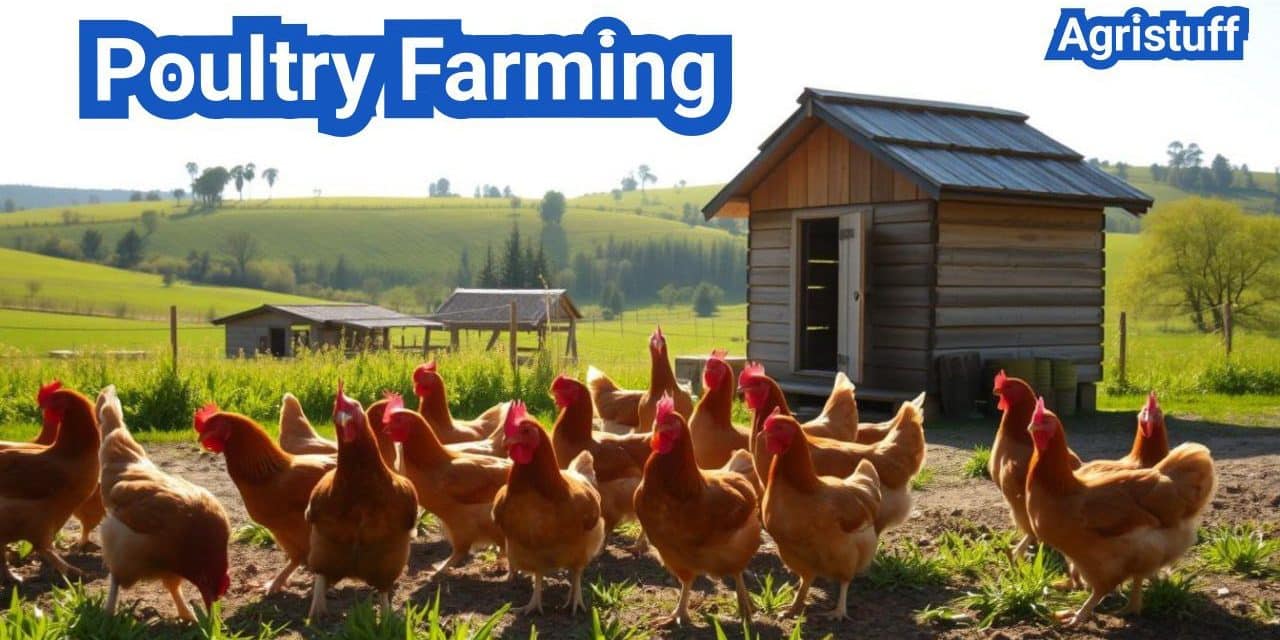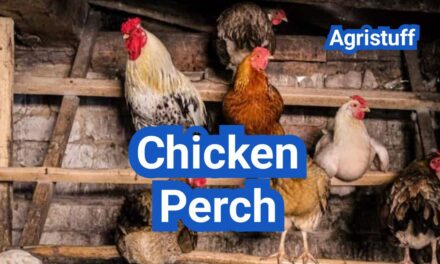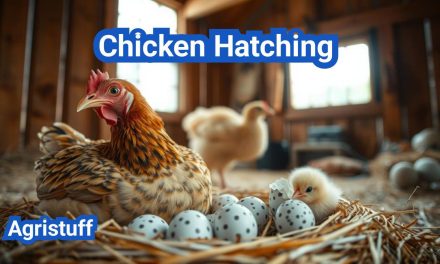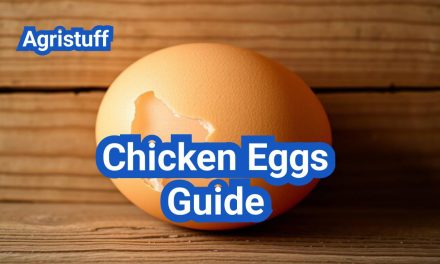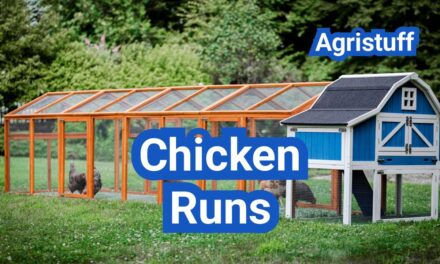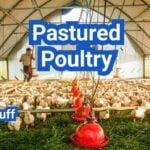Poultry farming is a significant agricultural practice that involves raising birds for eggs and meat. It has seen substantial growth globally, with production increasing significantly between 1961 and 2020.
For those new to this industry, starting a poultry farming business can be a daunting task. However, with a well-structured poultry farming business plan, beginners can navigate the challenges and succeed.
The scope of this guide is to provide an overview of the basics of poultry farming, including the types of birds used and the essential poultry farming equipment needed.
Key Takeaways
- Understanding the basics of poultry farming
- Creating a comprehensive poultry farming business plan
- Selecting the right poultry farming equipment
- Exploring backyard poultry farming options
- Learning from successful poultry farming practices
Understanding Poultry Farming Fundamentals
Poultry farming is a complex and multifaceted industry that has evolved significantly over the years. At its core, it involves the rearing of domesticated birds for various agricultural purposes, including the production of eggs and meat. To grasp the intricacies of poultry farming, it’s essential to understand its fundamentals, which encompass a broad range of practices, techniques, and knowledge areas.
What Is Poultry Farming?
Poultry farming refers to the practice of raising domesticated birds such as chickens, turkeys, ducks, and geese for their meat, eggs, and other products. This agricultural practice is a significant source of income for many farmers worldwide and plays a crucial role in food security. Poultry farming can be categorized into different types based on the purpose of the farm, such as egg production, meat production, or breeding.
The History and Evolution of Poultry Farming
The history of poultry farming dates back thousands of years, with evidence of chicken domestication found in ancient civilizations. Over time, poultry farming has evolved through selective breeding, advancements in nutrition, and improvements in farm management practices. The development of modern poultry farming has led to increased efficiency, higher productivity, and better disease management.
Types of Poultry Birds for Farming
There are several types of poultry birds commonly farmed around the world, each with its unique characteristics and purposes. The most common include:
- Chickens: Raised for both eggs and meat, chickens are one of the most popular poultry birds.
- Turkeys: Known for their meat, turkeys are often raised for special occasions and holidays.
- Ducks: Ducks are farmed for their meat, eggs, and down feathers.
- Geese: Geese are valued for their meat, eggs, and feathers, and are also used for guarding other poultry.
Understanding the different types of poultry birds and their specific needs is crucial for successful farming. Each type requires different management practices, housing, and nutrition.
Benefits of Starting a Poultry Farming Business

The benefits of poultry farming extend beyond financial gains, contributing to self-sufficiency and environmental sustainability. As a business venture, it offers a unique combination of economic advantages, food security, and relatively low initial investment requirements.
Economic Advantages and Quick Returns
Poultry farming is recognized for its potential to generate significant economic returns. The demand for poultry products is consistently high, providing a stable market for farmers. Economic benefits include:
- Quick returns on investment due to the relatively fast growth rate of poultry birds
- Opportunities for diversification, such as selling eggs, meat, or breeding stock
- Potential for scaling up production to increase profitability
Food Security and Self-Sufficiency
Poultry farming contributes significantly to food security by providing a reliable source of protein. For individuals and families, raising poultry can enhance self-sufficiency, allowing for the production of eggs and meat at home.
Low Initial Investment Requirements
Compared to other forms of livestock farming, poultry farming requires relatively low initial investment. This makes it an accessible business opportunity for new entrepreneurs. The initial costs can be further reduced by starting small and scaling up as the business grows.
Environmental Benefits
Poultry farming can have several environmental benefits when managed sustainably. For example, poultry manure can be used as fertilizer, reducing the need for synthetic fertilizers. Additionally, pasture-raised poultry can contribute to land management by helping to control pest populations and improve soil health.
| Benefit | Description | Impact |
|---|---|---|
| Economic Advantages | Quick returns, diversification opportunities, and scalability | High profitability and business growth |
| Food Security | Reliable source of protein, enhanced self-sufficiency | Improved nutrition and food availability |
| Low Initial Investment | Accessible to new entrepreneurs, scalable | Increased business opportunities |
| Environmental Benefits | Sustainable practices, manure as fertilizer, land management | Reduced environmental impact |
Getting Started with Poultry Farming: First Steps
Starting a poultry farming business involves several key initial steps that can make or break your venture. It’s a journey that requires careful planning, a thorough understanding of the basics, and a clear vision of what you want to achieve.
Assessing Your Resources and Capabilities
Before you begin, it’s crucial to assess your resources and capabilities. This includes evaluating your financial situation, the land you have available, and your ability to manage the day-to-day operations of a poultry farm.
- Evaluate your financial resources and potential funding options.
- Assess the suitability of your land for poultry farming.
- Consider your management capabilities and labor availability.
Legal Requirements and Permits
Understanding the legal requirements and obtaining necessary permits is a critical step. Regulations can vary significantly by location, so it’s essential to research and comply with local laws.
“Compliance with local regulations is not just about avoiding fines; it’s about ensuring the health and safety of your flock and the community.” – Poultry Farming Expert
| Permit Type | Description | Typical Requirements |
|---|---|---|
| Business License | Legal permission to operate a business | Business registration, fees |
| Zoning Permit | Permission to operate a farm in a specific area | Land use compliance, inspections |
| Health Department Permit | Ensures compliance with health and safety standards | Inspections, health standards compliance |
Choosing Between Meat, Egg, or Dual-Purpose Production
Deciding on the type of production is a pivotal decision. Each type has its own set of challenges and opportunities.
Meat Production: Focuses on raising birds for meat. Requires efficient growth rates and high-quality feed.
Egg Production: Involves raising layers for egg production. Requires breeds known for high egg yield and proper housing for egg collection.
Dual-Purpose Production: Offers the flexibility of producing both meat and eggs, though it may not excel in either.
Starting Small: Manageable Entry Points
Starting small is often recommended for new entrants. It allows you to gain experience, test your business model, and scale up as you become more confident and proficient.
- Begin with a small flock to manage and monitor.
- Test your systems and processes.
- Scale up gradually based on your experience and market demand.
Developing a Comprehensive Poultry Farming Business Plan

Developing a comprehensive business plan is the first step towards establishing a thriving poultry farm. A well-structured plan serves as a roadmap, guiding farmers through the complexities of the industry and helping them achieve their goals.
Market Research and Analysis
Conducting thorough market research is crucial for understanding the demand and supply dynamics of poultry products. This involves analyzing consumer preferences, market trends, and competitor activity to identify opportunities and challenges.
Key aspects of market research include:
- Identifying target markets and customer segments
- Analyzing market trends and forecasts
- Assessing competitor strategies and market share
Financial Planning and Budgeting
Financial planning is a critical component of a poultry farming business plan. It involves estimating startup costs, projecting revenue, and managing expenses to ensure profitability.
Key financial planning considerations include:
- Initial investment costs, including infrastructure and equipment
- Ongoing expenses, such as feed, labor, and veterinary care
- Revenue projections based on production levels and market prices
Setting Realistic Goals and Timelines
Setting realistic goals and timelines is essential for measuring progress and achieving success in poultry farming. This involves establishing clear objectives, milestones, and deadlines.
Best practices for goal setting include:
- Defining specific, measurable, achievable, relevant, and time-bound (SMART) objectives
- Establishing key performance indicators (KPIs) to track progress
- Regularly reviewing and adjusting goals as needed
Risk Assessment and Contingency Planning
Risk assessment and contingency planning are vital for mitigating potential risks and challenges in poultry farming. This involves identifying potential risks, assessing their likelihood and impact, and developing strategies to mitigate or manage them.
Key risk assessment considerations include:
- Disease outbreaks and biosecurity measures
- Market fluctuations and price volatility
- Environmental factors, such as weather and climate change
By developing a comprehensive business plan that includes market research, financial planning, goal setting, and risk assessment, poultry farmers can establish a solid foundation for success and achieve their objectives.
Selecting the Right Poultry Breeds
The right poultry breed can significantly impact the profitability and sustainability of a farming operation. Choosing breeds that are well-suited to the farm’s specific needs and goals is crucial for achieving success in poultry farming.
Egg-Laying Chicken Breeds
For farmers focused on egg production, selecting breeds known for their high egg-laying capacity is essential. Breeds like the Leghorn and Rhode Island Red are popular choices due to their prolific egg-laying abilities. These breeds can produce a significant number of eggs per year, making them ideal for commercial egg production.
Egg-laying breeds are often lightweight, requiring less feed to maintain, which can help reduce operational costs. When choosing an egg-laying breed, consider factors such as climate adaptability, disease resistance, and temperament to ensure the flock thrives.
Meat-Producing Chicken Breeds
For those focused on meat production, breeds that grow quickly and efficiently are preferred. The Cornish Cross is a well-known breed in this category, celebrated for its rapid growth rate and high-quality meat. These birds are typically ready for market in a shorter timeframe compared to other breeds.
Meat-producing breeds are bred to have a high feed conversion ratio, meaning they can efficiently convert feed into muscle mass. This efficiency is key to maintaining profitability in meat production.
Dual-Purpose Chicken Breeds
Dual-purpose breeds offer the advantage of being suitable for both egg and meat production. Breeds like the Plymouth Rock and Sussex are valued for their ability to provide a steady supply of eggs while also being raised for meat. These breeds are often more robust and can be a good choice for small-scale or backyard farming operations.
Dual-purpose breeds can offer a more diversified income stream for farmers, as they can sell both eggs and meat. This versatility can be particularly beneficial in fluctuating market conditions.
Duck Farming: Breed Selection Guide
Duck farming is another aspect of poultry farming that can be highly rewarding. For egg production, breeds like the Khaki Campbell are renowned for their high egg-laying capabilities. For meat production, the Pekin duck is a popular choice due to its fast growth rate and tender meat.
When selecting duck breeds, consider factors such as foraging ability, growth rate, and egg-laying capacity. Ducks can be a valuable addition to a diversified poultry farm, offering a different product line and potentially accessing new markets.
Essential Poultry Farming Equipment and Supplies

Poultry farming requires a range of essential equipment and supplies to manage the birds effectively and maintain farm efficiency. The right equipment not only enhances productivity but also ensures the health and welfare of the poultry.
Housing and Shelter Requirements
Adequate housing is crucial for protecting poultry from predators, harsh weather conditions, and disease. The housing structure should be well-ventilated, dry, and secure. Predator-proofing is a critical aspect of poultry housing to prevent losses. The shelter should also be designed to accommodate the specific needs of the poultry breed being raised.
Feeding and Watering Systems
Efficient feeding and watering systems are vital for the health and productivity of poultry. Automatic feeding systems can help in reducing labor costs and ensuring that the birds are fed consistently. Watering systems should be designed to prevent contamination and ensure easy access to clean water for the birds.
Incubation and Brooding Equipment
For poultry farms that breed their own birds, incubation equipment is essential. Incubators should be capable of maintaining precise temperature and humidity levels. Brooding equipment, including heat lamps and brooders, is necessary for raising young chicks, providing them with the warmth and protection they need.
Monitoring and Safety Tools
Monitoring and safety tools are critical for maintaining the health of the flock and the safety of the farm. This includes equipment for monitoring temperature, humidity, and ventilation in the poultry house, as well as safety gear for farm workers, such as gloves and masks, to prevent the spread of disease.
By investing in the right equipment and supplies, poultry farmers can significantly improve the efficiency and profitability of their operations. It’s also important to regularly inspect and maintain equipment to ensure it remains in good working condition.
Setting Up Your Poultry Housing System

Poultry housing is not just about providing shelter; it’s about creating an environment that promotes health and productivity. A well-designed housing system is crucial for the overall success of your poultry farming operation.
Types of Poultry Housing
There are several types of poultry housing systems, each with its advantages and disadvantages. The choice of housing depends on factors such as the size of your operation, the type of poultry you are raising, and your budget.
- Open-sided houses: These are simple and cost-effective, providing good ventilation but offering little protection against predators and extreme weather.
- Closed houses: These provide better control over the environment, including temperature and humidity, but are more expensive to construct and maintain.
- Free-range systems: These allow birds to roam freely outdoors, promoting natural behavior and potentially improving welfare, but they require additional predator protection measures.
Space Requirements and Ventilation
Adequate space and ventilation are critical for maintaining the health and productivity of your flock. Overcrowding can lead to stress, disease, and reduced growth rates.
- Ensure at least 2-4 square feet per bird inside the coop, depending on the breed and size.
- Provide adequate ventilation to remove moisture, ammonia, and heat, thereby reducing the risk of respiratory diseases.
Predator Protection Measures
Protecting your poultry from predators is a significant challenge. Effective measures include:
- Secure fencing: Use hardware cloth or chicken wire with openings of 1 inch or less to prevent predators from entering.
- Covered runs: Cover outdoor areas with netting or chicken wire to protect against aerial predators.
- Locking doors: Ensure that all doors and windows are securely locked at night to prevent easy access by predators.
Designing for Different Climate Conditions
The design of your poultry housing must take into account the local climate to ensure the comfort and health of your birds.
In colder climates, insulation and heating may be necessary to maintain a comfortable temperature. In hotter climates, shading, ventilation, and cooling systems can help prevent heat stress.
| Climate | Design Considerations |
|---|---|
| Cold | Insulation, heating, draft-free |
| Hot | Shading, ventilation, cooling systems |
| Temperate | Balanced ventilation, moderate insulation |
Backyard and Small Scale Poultry Farming

Starting a small-scale poultry farm in your backyard can be a fulfilling venture, providing fresh produce and a sense of accomplishment. As urban agriculture continues to gain popularity, backyard poultry farming has become an attractive option for many.
Space-Efficient Designs for Limited Areas
When space is limited, designing an efficient poultry farm is crucial. Vertical coop designs and multi-level nesting boxes can significantly increase egg production per square foot. Consider using wall-mounted feeders and waterers to save floor space.
For small backyards, a well-planned layout can make a big difference. Utilizing corners and against walls can help maximize available space. Additionally, incorporating movable coops or portable pens allows for better land management and reduces the risk of disease.
Urban Chicken Keeping Regulations
Before starting your backyard poultry farm, it’s essential to familiarize yourself with local regulations. Many cities have specific ordinances regarding the number of chickens allowed, coop requirements, and whether roosters are permitted.
- Check with your local government for zoning laws.
- Understand the permits required for keeping chickens.
- Familiarize yourself with noise ordinances if you plan to keep roosters.
Balancing Production with Family Needs
Balancing the production of your poultry farm with your family’s needs is vital. Assess your family’s consumption of eggs and meat to determine the appropriate scale of your operation. For example, a family of four might require a dozen eggs per week, influencing the number of hens you should keep.
| Family Size | Eggs per Week | Number of Hens |
|---|---|---|
| 2-3 | 6-8 | 3-4 |
| 4-6 | 12-18 | 6-9 |
Chicken Farming at Home: Practical Setup
Setting up a practical chicken farm at home involves several key steps. First, ensure your coop is secure and well-ventilated. Provide adequate lighting, as chickens need a certain amount of daylight to produce eggs efficiently.
For a successful setup, consider the following:
- Choose a suitable location for your coop, ensuring it’s dry and well-drained.
- Install a robust fencing system to protect your chickens from predators.
- Implement a regular feeding and watering schedule.
By following these guidelines and considering your local regulations and family needs, you can establish a thriving backyard poultry farm that provides fresh eggs and meat while being a rewarding hobby.
Commercial Poultry Farming Models

Commercial poultry farming is not limited to a single production method; instead, it encompasses a variety of models, including free-range, battery cage, organic, and pasture-raised systems. Each of these models has its unique characteristics, advantages, and challenges.
Free-Range Poultry Farming
Free-range poultry farming allows birds to roam outdoors, providing them with more space and a natural environment. This method is often associated with improved animal welfare and can result in better meat quality.
Benefits of Free-Range Farming:
- Improved animal welfare
- Better meat quality
- Potential for higher market prices
However, free-range farming also presents challenges such as increased risk of disease and predation, and higher labor costs.
Battery Cage Poultry Farming
Battery cage farming is a highly intensive system where birds are kept in cages. This method is known for its efficiency and cost-effectiveness.
Advantages of Battery Cage Farming:
- High egg production rates
- Efficient use of space
- Lower feed conversion ratios
Despite its advantages, battery cage farming has faced criticism regarding animal welfare concerns.
Organic Poultry Production
Organic poultry production involves raising birds without the use of antibiotics, hormones, or pesticides. This method appeals to consumers looking for organic products.
Key Features of Organic Poultry Production:
- No use of antibiotics or hormones
- Access to outdoor areas
- Organic feed
Organic production can command higher prices, but it also involves higher production costs and stricter regulations.
Pasture-Raised Systems
Pasture-raised systems involve moving birds to different pastures to graze, promoting natural foraging behavior. This method is considered beneficial for both the birds and the land.
Benefits of Pasture-Raised Systems:
| Benefit | Description |
|---|---|
| Improved soil health | Rotating pastures helps in maintaining soil fertility. |
| Better bird health | Access to fresh pasture reduces disease risk. |
| High-quality meat | Pasture-raised birds often have better meat quality. |
In conclusion, each commercial poultry farming model has its unique advantages and challenges. Farmers must consider their resources, market demand, and production goals when choosing a model.
Poultry Nutrition and Feeding Management

Understanding poultry nutrition is vital for any poultry farming operation, as it directly affects the birds’ growth and productivity. Proper nutrition ensures that the birds remain healthy, grow at a optimal rate, and produce high-quality eggs or meat.
Basic Nutritional Requirements
Poultry require a balanced diet that includes proteins, carbohydrates, fats, vitamins, and minerals. Proteins are crucial for growth and development, while carbohydrates and fats provide energy. Vitamins and minerals are essential for various bodily functions, including immune response and bone health.
| Nutrient | Function | Sources |
|---|---|---|
| Protein | Growth and development | Soybean meal, fish meal |
| Carbohydrates | Energy | Corn, wheat |
| Fats | Energy, nutrient absorption | Vegetable oils, animal fats |
Feed Formulation and Types
Poultry feed can be formulated in various ways to meet the nutritional needs of the birds at different stages of their life cycle. Starter feeds are used for young birds, while grower feeds are used for older birds. The type of feed used can significantly impact the health and productivity of the flock.
Feeding Schedules and Techniques
Establishing a consistent feeding schedule is crucial for maintaining the health and productivity of poultry. Feeding techniques can vary depending on the type of poultry and their stage of development. For example, young chicks may require more frequent feeding than older birds.
- Provide fresh feed daily
- Ensure access to clean water at all times
- Monitor feed consumption to adjust feeding schedules as needed
Water Management
Water is a critical component of poultry nutrition, making up a significant portion of a bird’s body weight. Ensuring access to clean, fresh water is essential for maintaining the health and productivity of the flock. Water quality should be regularly monitored to prevent disease.
| Water Quality Parameter | Acceptable Range |
|---|---|
| pH | 6.5-7.5 |
| Total Dissolved Solids (TDS) | < 1000 ppm |
| Bacterial Contamination | Minimal to none |
Effective Poultry Farm Management Practices

The key to a thriving poultry farm lies in its management practices. Effective management is crucial for maintaining the health and productivity of the flock, as well as ensuring the overall profitability of the farm.
Daily Management Routines
Daily routines are essential for the smooth operation of a poultry farm. These routines include checking the health of the birds, ensuring that feeding and watering systems are functioning properly, and maintaining cleanliness within the farm premises. Regular monitoring helps in early detection of diseases and reduces the risk of outbreaks.
Farmers should also inspect the housing and equipment daily to identify any damage or issues that need immediate attention. This proactive approach helps in preventing losses and maintaining a healthy environment for the birds.
Record Keeping and Performance Monitoring
Maintaining accurate records is vital for the effective management of a poultry farm. Records should include data on bird health, growth rates, feed consumption, and egg production. Analyzing these records helps farmers make informed decisions regarding feeding strategies, breeding programs, and health interventions.
Performance monitoring involves tracking key performance indicators (KPIs) such as mortality rates, feed conversion ratios, and growth rates. This information is crucial for identifying areas of improvement and implementing corrective actions.
Labor Management
Labor management is another critical aspect of poultry farm management. Ensuring that farm workers are well-trained and knowledgeable about poultry farming practices is essential for maintaining high standards of bird care and farm operations.
Effective labor management involves assigning tasks appropriately, providing ongoing training, and ensuring that workers are aware of their responsibilities and the importance of their roles in maintaining farm productivity.
Sustainable Waste Management
Sustainable waste management practices are essential for minimizing the environmental impact of poultry farming. This includes implementing proper manure management systems, reducing waste through efficient feeding practices, and utilizing waste materials where possible.
By adopting sustainable waste management practices, poultry farms can reduce their environmental footprint and contribute to a more sustainable agricultural sector.
Poultry Health Management and Disease Prevention

Poultry health management is a critical aspect of poultry farming that requires careful planning and execution. Maintaining the health of your poultry flock is essential for maximizing productivity, ensuring profitability, and promoting animal welfare.
Common Poultry Diseases and Symptoms
Poultry are susceptible to various diseases, including bacterial, viral, and parasitic infections. Some common diseases include Avian Influenza, Newcastle Disease, and Coccidiosis. Recognizing the symptoms of these diseases is crucial for early detection and intervention.
| Disease | Symptoms | Prevention Measures |
|---|---|---|
| Avian Influenza | Respiratory distress, lethargy, sudden death | Vaccination, biosecurity measures |
| Newcastle Disease | Respiratory issues, nervous system problems, decreased egg production | Vaccination, strict biosecurity |
| Coccidiosis | Diarrhea, weight loss, decreased feed intake | Medication, sanitation, and hygiene practices |
Vaccination Schedules and Protocols
Vaccination is a critical component of poultry health management. Developing a vaccination schedule that is tailored to the specific needs of your flock is essential. Consult with a veterinarian to determine the most effective vaccination protocol for your operation.
“Vaccination is one of the most effective ways to prevent disease in poultry. A well-planned vaccination program can significantly reduce the risk of disease outbreaks.”
Biosecurity Measures
Biosecurity measures are vital for preventing the introduction and spread of diseases within your poultry flock. These measures include restricting access to the farm, using disinfectants, and implementing proper waste management practices.
Natural Health Maintenance Approaches
In addition to conventional disease prevention methods, natural health maintenance approaches can be beneficial. These include providing a balanced diet, ensuring access to clean water, and promoting stress reduction through environmental enrichment.
- Provide a nutritious diet that includes essential vitamins and minerals.
- Ensure access to clean, fresh water at all times.
- Implement stress reduction techniques, such as providing adequate space and environmental enrichment.
Your Path to Successful Poultry Farming
Successful poultry farming requires careful planning, effective management, and a commitment to maintaining poultry health and productivity. By understanding the fundamentals of poultry farming, developing a comprehensive business plan, and implementing effective management practices, you can achieve success in this rewarding industry.
To ensure successful poultry farming, it’s essential to select the right poultry breeds, provide adequate housing and nutrition, and maintain a healthy environment. By following these poultry farming tips and staying committed to your goals, you can build a thriving poultry farming business.
Whether you’re just starting out or looking to expand your existing operation, the key to successful poultry farming lies in careful planning, attention to detail, and a willingness to adapt to changing circumstances. By applying the principles outlined in this guide, you can achieve your goals and enjoy a rewarding experience in the world of poultry farming.
FAQ
What is poultry farming, and what are its main objectives?
Poultry farming is the practice of raising domesticated birds, such as chickens, ducks, and turkeys, for their meat, eggs, and other products. The main objectives of poultry farming include providing a sustainable source of protein, generating income for farmers, and contributing to food security.
What are the benefits of starting a poultry farming business?
Starting a poultry farming business can provide economic advantages, such as quick returns on investment, and contribute to food security and self-sufficiency. It also requires relatively low initial investment and can be environmentally beneficial.
How do I choose the right poultry breed for my farm?
Choosing the right poultry breed depends on your farming objectives, such as egg-laying, meat production, or dual-purpose production. Consider factors like climate, available resources, and market demand when selecting a breed.
What are the essential equipment and supplies needed for poultry farming?
Essential equipment and supplies for poultry farming include housing and shelter, feeding and watering systems, incubation and brooding equipment, and monitoring and safety tools.
How do I set up an effective poultry housing system?
Setting up an effective poultry housing system involves considering factors like space requirements, ventilation, predator protection, and climate conditions. The type of housing will depend on the poultry breed, size of the operation, and local regulations.
What are the different commercial poultry farming models?
Commercial poultry farming models include free-range, battery cage, organic, and pasture-raised systems. Each model has its characteristics, benefits, and challenges, and the choice will depend on factors like market demand, resources, and local regulations.
How do I manage poultry nutrition and feeding?
Poultry nutrition and feeding management involve providing a balanced diet that meets the nutritional requirements of the birds. This includes selecting the right feed formulation, implementing feeding schedules, and ensuring access to clean water.
What are the key practices for effective poultry farm management?
Effective poultry farm management practices include daily management routines, record keeping, labor management, and sustainable waste management. These practices help ensure the health and productivity of the flock.
How can I prevent and manage poultry diseases?
Preventing and managing poultry diseases involves implementing biosecurity measures, following vaccination schedules, and maintaining a clean and healthy environment. It’s also essential to monitor the flock’s health regularly and respond promptly to any signs of disease.
What are the regulations and considerations for backyard and small-scale poultry farming?
Backyard and small-scale poultry farming are subject to local regulations, such as zoning laws and health codes. It’s essential to research and comply with these regulations, as well as consider factors like space-efficient designs and balancing production with family needs.
How can I ensure the welfare of my poultry?
Ensuring the welfare of poultry involves providing a safe and healthy environment, adequate nutrition, and humane treatment. This includes implementing practices like free-range or pasture-raised systems, avoiding overcrowding, and minimizing stress.
Conclusion Of: Poultry Farming
Poultry farming is a rewarding and lucrative venture, ideal for beginners looking to enter the agricultural industry. Whether you’re interested in raising chickens, ducks, turkeys, or geese, understanding the basics of poultry farming is essential for success. In the USA, poultry farming plays a crucial role in agriculture, providing a steady supply of meat and eggs. Learn more about the industry’s economic impact from the USDA’s Poultry & Egg Report.
Why Start Poultry Farming
Embarking on poultry farming offers several advantages, including relatively low startup costs, quick returns on investment, and manageable space requirements. Poultry farming also supports sustainable living and food security. For insights on profitability, explore the University of Georgia’s Poultry Science Department.
Choosing Poultry Breeds
Successful poultry farming begins with selecting the right breed. Common choices include layers (for eggs), broilers (for meat), and dual-purpose breeds like Rhode Island Reds or Plymouth Rocks, which are excellent for both meat and eggs. The Penn State Extension Guide to Poultry Breeds provides detailed comparisons.
Setting Up Your Poultry Farm
Location, housing, and equipment are foundational in poultry farming. Ensure adequate ventilation, proper lighting, and safe housing structures to protect your birds from predators and harsh weather conditions. The Mississippi State University Poultry Housing Guide offers practical tips.
Feeding Your Poultry
Proper nutrition is vital in poultry farming. Poultry diets should include a balanced mix of grains, protein, vitamins, and minerals to maintain health and optimize productivity. The FDA’s Animal Feed Regulations ensure feed safety standards.
Health and Disease Management
Disease management is critical in poultry farming. Regular vaccination, proper hygiene, and timely veterinary care help in preventing common poultry diseases. The CDC’s Biosecurity Guidelines are a key resource.
Breeding and Hatchery Management
Managing breeding processes and hatcheries efficiently enhances poultry farming outcomes. Learn the techniques for successful incubation, hatching, and chick management. The USDA’s Hatchery Compliance Program outlines best practices.
Egg Production Essentials
For poultry farming focused on egg production, managing laying hens effectively is essential. Understand laying cycles, nest management, and egg collection practices. The Iowa State University Egg Production Guide provides expert advice.
Meat Production Guidelines
In poultry farming aimed at meat production, managing growth rates, feed efficiency, and proper processing techniques ensures quality poultry meat. The National Chicken Council’s Broiler Welfare Standards are industry benchmarks.
Record Keeping and Profitability
Maintaining accurate records of your poultry farming operations assists in tracking performance, managing expenses, and optimizing profits. The Small Business Administration’s Farm Record-Keeping Guide offers templates.
Marketing Your Poultry Products
Effective marketing strategies are necessary to maximize profits in poultry farming. Explore local markets, farmers’ markets, online platforms, and direct consumer sales. The Agricultural Marketing Resource Center shares innovative strategies.
Regulatory Compliance
Understanding and complying with local and federal regulations ensures your poultry farming business operates legally and sustainably. The FDA’s Poultry Processing Regulations detail compliance requirements.
Common Mistakes to Avoid
Beginners in poultry farming often overlook critical factors such as biosecurity, nutrition, and space allocation. Avoid these pitfalls by thorough planning and education. The University of Arkansas’ Poultry Farming Guide highlights common errors.
Sustainable Poultry Farming Practices
Adopting sustainable practices, including waste management and resource conservation, contributes positively to the environment and enhances long-term viability. The EPA’s AgStar Program focuses on sustainable poultry waste solutions.
Expanding Your Poultry Farm
Once established, consider expanding your poultry farming business by diversifying breeds, products, or incorporating advanced technologies. The USDA’s Value-Added Producer Grants support farm growth.
Final Thought
Starting poultry farming requires dedication, informed planning, and consistent management. By following this guide, beginners can build a thriving poultry business that is profitable and rewarding. For further reading, visit the Poultry Science Association.

